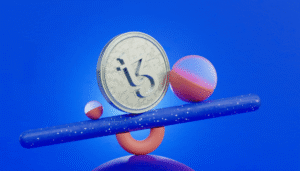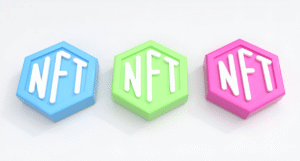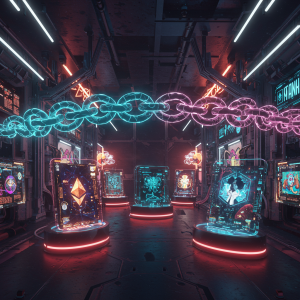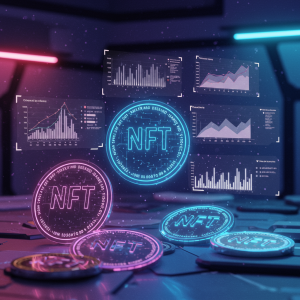The Underground Economy of NFT Emotional Labor: How Digital Artists Are Selling Feelings, Memories, and Trauma as Collectible Assets

Maya Chen never thought her panic attack would be worth $3,200. Yet that’s exactly what happened when she minted an NFT containing a real-time audio recording of her anxiety episode, complete with heart rate data and GPS coordinates from that Tuesday afternoon in downtown Seattle.
The buyer wasn’t a traditional art collector. They were what the emerging community calls a “feeling whale” – someone who collects authentic emotional experiences stored permanently on the blockchain.
Welcome to the strangest corner of the NFT world, where human consciousness itself has become a tradable commodity.
The Birth of Emotion Mining
Traditional NFTs represent digital art, music, or collectibles. Emotional NFTs represent something far more intimate: the raw, unfiltered human experience packaged as verifiable digital assets.
This trend started quietly in underground Discord servers where artists shared not just their work, but their creative process emotions. Someone realized these documented feelings held value beyond traditional art markets.
The first major emotional NFT sale occurred in late 2023. Artist Marcus Rodriguez minted his grandmother’s final voicemail as an NFT, including his emotional response recorded immediately after listening. The piece sold for 12 ETH, sparking a movement that nobody saw coming.
What makes these NFTs valuable isn’t just their emotional content. It’s the blockchain verification that these feelings are authentic, timestamped, and genuinely experienced by real humans.
Memory Trading: The New Digital Gold Rush
Personal memories have become the latest frontier in NFT speculation. Collectors aren’t just buying art anymore – they’re purchasing entire documented life experiences.
Sarah Kim, a 28-year-old photographer from Portland, has sold over 40 memory NFTs in the past year. Her most expensive piece was a detailed account of her first kiss, complete with sensory descriptions, emotional reactions, and even the Spotify playlist from that evening. It sold for $4,800.
“People want authentic human experiences,” Kim explains. “In a world of AI-generated everything, genuine human memories feel increasingly rare and valuable.”
The memory trading market has developed its own complex ecosystem. Brokers specialize in specific types of experiences – childhood memories, relationship milestones, career achievements, or even mundane moments that capture universal human experiences.
Some creators have built entire businesses around memory monetization. They document significant life events in real-time, knowing each authentic moment could become a valuable NFT.
The Psychology Behind Emotional Collecting
Understanding why people pay thousands for documented anxiety attacks or recorded heartbreak requires diving into modern psychology and digital culture.
Dr. Jennifer Walsh, a behavioral economist studying NFT markets, believes emotional collecting serves multiple psychological needs. “Buyers aren’t just purchasing art,” she explains. “They’re buying validated human connection in an increasingly isolated digital world.”
Emotional NFT collectors often describe feeling genuine empathy with the original creators. Some claim they experience phantom emotions when viewing their purchased pieces – a phenomenon researchers are beginning to study seriously.
The verification aspect proves crucial to buyer psychology. Knowing an emotion is blockchain-certified as authentic makes collectors feel they own a genuine piece of human consciousness rather than manufactured content.
For comprehensive insights into emerging NFT trends and market analysis, visit nftmarketo for expert guidance.
Trauma as Currency: The Darkest Market
Perhaps the most controversial segment involves trauma NFTs – documented experiences of genuine psychological distress sold as collectible assets.
These pieces often command premium prices precisely because of their painful authenticity. Collectors justify purchases as supporting artists through difficult periods, but critics argue the practice commodifies human suffering in disturbing ways.
Lisa Martinez minted an NFT collection called “Therapy Sessions” containing audio recordings from her actual counseling appointments (with therapist consent). Each session sells for between $800-$2,000, with buyers often requesting specific types of emotional content.
“My depression feels less meaningless when someone values it enough to pay for it,” Martinez says. “It transforms my worst moments into something that has concrete worth.”
The ethical implications remain largely unexplored. Mental health professionals express concern about incentivizing trauma documentation, while supporters argue it provides new income streams for struggling artists.
Verification and Authentication Challenges
Proving emotional authenticity presents unique technical challenges that traditional NFT markets never faced.
Current verification methods include biometric data, timestamped recordings, GPS coordinates, and even medical records in extreme cases. Some platforms require creators to wear heart rate monitors or other devices during emotional experiences.
Smart contracts now include clauses verifying emotional authenticity. If buyers discover purchased emotions were fabricated or artificially induced, they can trigger automatic refunds through blockchain mechanisms.
Advanced verification systems are emerging that analyze voice stress patterns, micro-expressions in video recordings, and physiological markers to confirm genuine emotional states.
The Empathy Mining Phenomenon
A strange subculture has developed around “empathy mining” – the belief that owning someone’s documented emotions allows collectors to experience those feelings themselves.
Regular emotional NFT buyers report developing unusual connections with creators whose emotions they’ve purchased. Some describe experiencing phantom sadness, joy, or anxiety that seems to originate from their digital collections.
Whether this represents genuine psychological phenomena or elaborate placebo effects remains unclear. However, the belief drives significant market activity and premium pricing for particularly intense emotional experiences.
Support groups have formed for collectors struggling with absorbed emotions from their NFT purchases. The psychological impact of collecting human consciousness appears more complex than anyone anticipated.
Legal Gray Areas and Ownership Questions
Traditional intellectual property law never contemplated scenarios where people sell documented emotions and memories. Current legal frameworks provide little guidance for emotional NFT dispute.
Key questions remain unanswered: Can someone truly own another person’s memory? What happens if multiple people claim ownership of shared experiences? How do privacy laws apply to sold emotions?
Several high-profile cases are working through court systems. One involves twins who both minted NFTs of their shared childhood trauma, leading to competing ownership claims. Another concerns a breakup where both parties sold NFTs of the same relationship events.
Legal experts predict new legislation specifically addressing emotional intellectual property within the next few years.
The Technology Behind Feeling Tokens
Emotional NFTs require more sophisticated smart contracts than traditional digital art. These tokens often include multiple data layers, verification mechanisms, and even interactive elements.
Some emotional NFTs include unlockable content that reveals additional emotional context as market values increase. Others feature time-locked elements that release new emotional data on specific dates meaningful to the creator.
Advanced projects incorporate biometric triggers that activate additional content when collectors experience similar emotional states. Heart rate spikes might unlock hidden audio recordings, while specific brain wave patterns could reveal deeper emotional layers.
Blockchain networks are developing specialized protocols for emotional data storage, ensuring these intimate human experiences remain permanently preserved and verifiable.
Market Dynamics and Price Discovery
Emotional NFT pricing follows patterns completely different from traditional art markets. Rarity doesn’t depend on visual aesthetics but on emotional intensity and authenticity.
Peak traumatic experiences command highest prices, while everyday emotions trade for smaller amounts. Market participants have developed complex rating systems for emotional authenticity, intensity, and documentation quality.
Seasonal patterns emerge in emotional trading. Depression-themed NFTs peak during winter months, while anxiety pieces surge during major news events. Relationship trauma sales spike around Valentine’s Day and common breakup periods.
Professional emotional NFT creators now time their most intense life experiences for optimal market conditions, raising questions about authentic versus manufactured emotional content.
The Future of Consciousness Commerce
This market represents early stages of what could become a massive economy built around trading human consciousness and experience.
Emerging technologies might soon allow collectors to experience purchased emotions directly through brain-computer interfaces. Virtual reality integration could let buyers fully immerse themselves in creators’ emotional states.
Some researchers predict emotional NFTs will evolve into complete personality trading, where people sell comprehensive psychological profiles as digital assets. Others envision subscription models where collectors pay for ongoing access to creators’ emotional states.
The convergence of blockchain technology, biometric monitoring, and brain science suggests we’re witnessing the birth of an entirely new economic sector built around monetizing human consciousness itself.
Creating Authentic Emotional Value
For artists considering emotional NFT creation, authenticity remains the primary value driver. Collectors can distinguish between genuine experiences and manufactured content with surprising accuracy.
Successful emotional NFT creators document their lives continuously, building comprehensive emotional portfolios over time. They develop personal brands around specific types of experiences – some specialize in relationship emotions, others focus on creative breakthrough moments.
The most valuable emotional NFTs combine multiple verification methods, detailed contextual information, and compelling backstories that help collectors understand the full emotional experience.
Building sustainable income from emotional labor requires treating feelings as a legitimate creative medium deserving the same professional attention as traditional art forms.
Conclusion: The Commodification of Being Human
Emotional NFTs represent either the natural evolution of digital art or a troubling commodification of human consciousness – possibly both simultaneously.
This underground economy reveals our collective hunger for authentic human connection in an increasingly artificial world. Whether buying documented emotions satisfies that hunger or further distances us from genuine human experience remains an open question.
What’s certain is that the market continues growing rapidly. As blockchain technology matures and biometric monitoring becomes ubiquitous, trading human consciousness may become as common as trading traditional collectibles.
The implications extend far beyond NFT markets. We’re witnessing the early stages of an economy where being human itself becomes a monetizable resource, with all the opportunities and dangers that entails.








